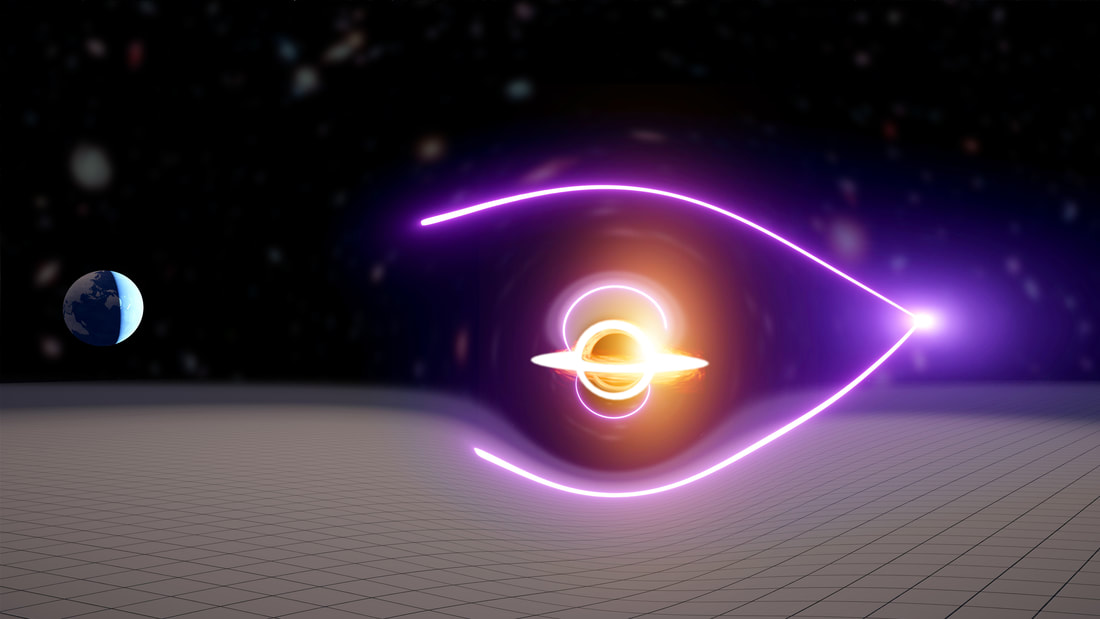|
Our Universe shines bright with light across the electromagnetic spectrum. While most of this light comes from stars like our Sun in galaxies like our own, we are often treated with brief and bright flashes that outshine entire galaxies themselves. Some of these brightest flashes are believed to be produced in cataclysmic events, such as the death of massive stars or the collision of two stellar corpses known as neutron stars. Researchers have long studied these bright flashes or ‘transients’ to gain insight into the deaths and afterlives of stars and the evolution of our Universe. Astronomers are sometimes greeted with transients that defy expectations and puzzle theorists who have long predicted how various transients should look. In October 2014, a long-term monitoring programme of the southern sky with the Chandra telescope—NASA’s flagship X-Ray telescope—detected one such enigmatic transient called CDF-S XT1: a bright transient lasting a few thousands of seconds. The amount of energy CDF-S XT1 released in X-rays was comparable to the amount of energy the Sun emits over a billion years. Ever since the original discovery, astrophysicists have come up with many hypotheses to explain this transient; however, none have been conclusive. In a recent study, a team of astrophysicists led by OzGrav postdoctoral fellow Dr Nikhil Sarin (Monash University) found that the observations of CDF-S XT1 match predictions of radiation expected from a a high-speed jet travelling close to the speed of light. Such “outflows” can only be produced in extreme astrophysical conditions, such as the disruption of a star as it gets torn apart by a massive black hole, the collapse of a massive star, or the collision of two neutron stars. Sarin et al’s study found that the outflow from CDF-S XT1 was likely produced by two neutron stars merging together. This insight makes CDF-S XT1 similar to the momentous 2017 discovery called GW170817—the first observation of gravitational-waves, cosmic ripples in the fabric of space and time—although CDF-S XT1 is 450 times further away from Earth. This huge distance means that this merger happened very early in the history of the Universe; it may also be one of the furthest neutron star mergers ever observed. Neutron star collisions are the main places in the Universe where heavy elements such as gold, silver, and plutonium are created. Since CDF-S XT1 occurred early on in the history of the Universe, this discovery advances our understanding of Earth’s chemical abundance and elements. Recent observations of another transient AT2020blt in January 2020—primarily with the Zwicky Transient Facility—have puzzled astronomers. This transient’s light is like the radiation from high-speed outflows launched during the collapse of a massive star. Such outflows typically produce higher energy gamma-rays; however, they were missing from the data – they were not observed. These gamma rays can only be missing due to one of three possible reasons: 1) The gamma-rays were not produced. 2) The gamma rays were directed away from Earth. 3) The gamma-rays were too weak to be seen. In a separate study, led again by OzGrav researcher Dr Sarin, the Monash University astrophysicists teamed up with researchers in Alabama, Louisiana, Portsmouth and Leicester to show that AT2020blt probably did produce gamma-rays pointed towards Earth, they were just really weak and missed by our current instruments. Dr Sarin says: “Together with other similar transient observations, this interpretation means that we are now starting to understand the enigmatic problem of how gamma-rays are produced in cataclysmic explosions throughout the Universe”. The class of bright transients collectively known as gamma-ray bursts, including CDF-S XT1, AT2020blt, and AT2021any, produce enough energy to outshine entire galaxies in just one second. “Despite this, the precise mechanism that produces the high-energy radiation we detect from the other side of the Universe is not known,” explains Dr Sarin. “These two studies have explored some of the most extreme gamma-ray bursts ever detected. With further research, we’ll finally be able to answer the question we’ve pondered for decades: How do gamma ray bursts work?”
0 Comments
Leave a Reply. |
|
- Home
- About
-
Our People
- Chief Investigators
- Partner Investigators
- Associate Investigators
- Postdocs and Students >
- Professional & Outreach staff
- Governance Advisory Committee
- Scientific Advisory Committee
- Executive Committee
- Equity & Diversity Committee
- Early Career Researcher Committee
- Professional Development Committee
- Research Translation Committee
- OzGrav Alumni
- Research Themes
- Education and Outreach
- Events
- News/Media
- Contact Us
- Home
- About
-
Our People
- Chief Investigators
- Partner Investigators
- Associate Investigators
- Postdocs and Students >
- Professional & Outreach staff
- Governance Advisory Committee
- Scientific Advisory Committee
- Executive Committee
- Equity & Diversity Committee
- Early Career Researcher Committee
- Professional Development Committee
- Research Translation Committee
- OzGrav Alumni
- Research Themes
- Education and Outreach
- Events
- News/Media
- Contact Us


 RSS Feed
RSS Feed








